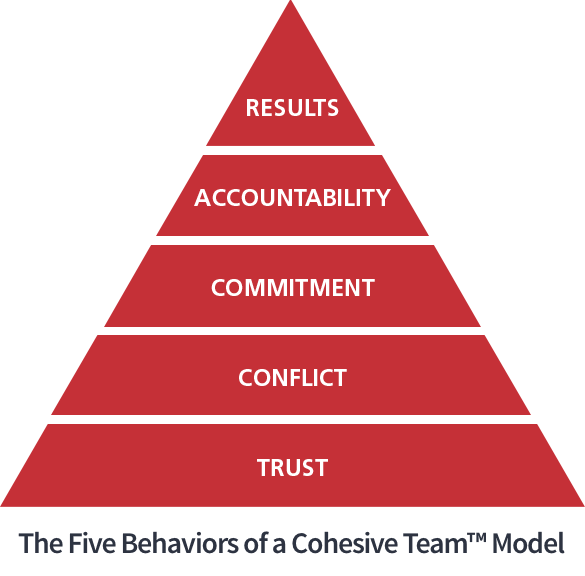Best Team Development
Team Development & Cohesive Team Training
Transform communication, build trust, and deliver results with the Five Behaviors Framework
Why Our Clients Call Us the Best in Team Development
At Top Performance Results, we help small business teams build trust, improve accountability, and perform at a higher level. Our training goes beyond theory — it transforms how your team works together every day.

Transform Your Team with the Power of Cohesion
Build Stronger Connections, Enhance Collaboration, and Achieve Extraordinary Results
A high-performing team isn’t defined by talent alone—it’s built on how well people trust, communicate, and collaborate. If your team is facing conflict, misalignment, or low morale, you’re not alone. The good news? There’s a proven path forward.
At Top Performance Results, LLC, we specialize in turning teams into high-performing, collaborative units using The Five Behaviors of a Cohesive Team®, a proven framework based on Patrick Lencioni’s bestselling methodology.
Ready to unlock your team’s full potential?

The Five Behaviors That Build a Strong, Cohesive Team
1️⃣ Trust – The Foundation of Team Success
Trust starts with vulnerability. Great teams feel safe enough to:
This means team members feel safe enough to:
✔️ Express honest opinions without fear
✔️ Admit mistakes without judgement
✔️ Solve problems collaboratively
Through interactive workshops and exercises, we help teams break down barriers, build genuine relationships, and foster an environment where every voice is valued.
2️⃣ Conflict – Turning Disagreements into Innovation
Conflict is inevitable, but how your team handles it makes all the difference. Healthy, constructive conflict leads to:
✔️ Stronger ideas through open debate.
✔️ Higher engagement from all team members.
✔️ Faster, smarter decision-making.
Our training teaches teams how to engage in productive conflict, ensuring discussions focus on ideas—not personal attacks—so your team stays dynamic and forward-thinking.
3️⃣ Commitment – Aligning for Action
A cohesive team isn’t just about discussing decisions—it’s about committing to them. After working through conflicts, team members must:
✔️ Fully align with team decisions, even if they initially disagreed.
✔️ Embrace a shared vision and take ownership of their roles.
✔️ Execute with confidence and clarity.
We show teams how to build trust in leadership, strengthen buy-in, and create a culture where decisions lead to action.
4️⃣ Accountability – Creating a Culture of Excellence
When team members hold each other accountable, standards rise and performance improves. A high-functioning team:
✔️ Encourages constructive feedback to drive growth.
✔️ Holds everyone to high standards without resentment.
✔️ Develops a shared responsibility for success.
We help teams develop accountability systems that create a culture of continuous improvement and support.
5️⃣ Results – Focusing on What Truly Matters
The best teams put the team’s success above individual ego. When every member:
✔️ Shares a common goal.
✔️ Understands their role in achieving that goal.
✔️ Works together toward measurable success.
They don’t just succeed—they excel. Our process ensures that your team is aligned, focused, and consistently delivering high-impact results.
Team Development That Drives Results
Organizations that apply The Five Behaviors® model see:
✅ More engaged employees who trust their team and leader
✅ Improved alignment between leadership and staff
✅ Clearer communication between leadership and staff
✅ Increased Productivity with fewer bottlenecks
✅ A culture of innovation, accountability and growth
Let’s Build a Team That Works Better—Together
If you’re ready to improve collaboration, boost productivity, and develop stronger team dynamics, let’s talk:
📞 Call 724-264-7500 or click below to schedule a consultation.
[ 📅 Book a Free Team Strategy Session! ]
Page content created by Diane Lazarowicz, PCC – Executive Coach, Team Development Specialist & AI Trainer helping small business leaders build stronger, more cohesive teams | Schedule a Free Consultation
